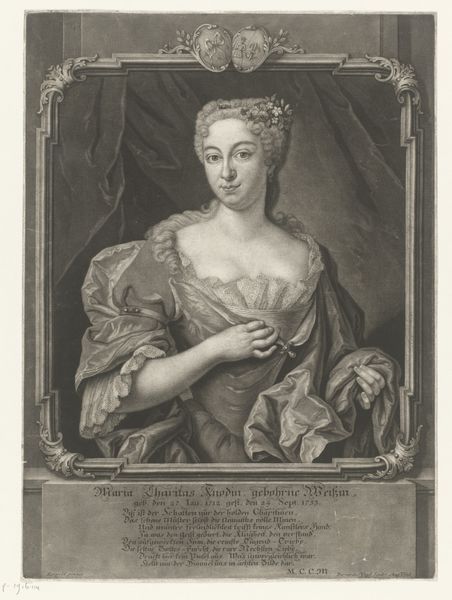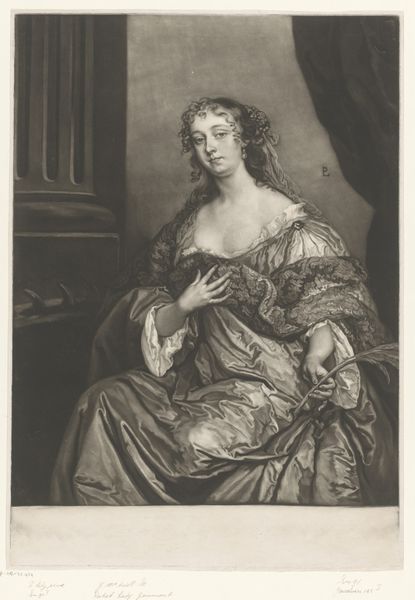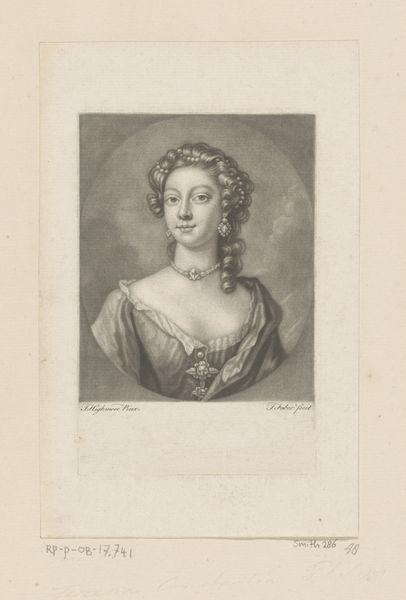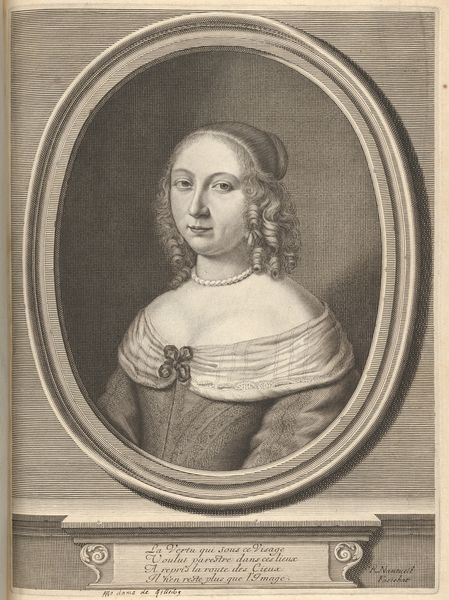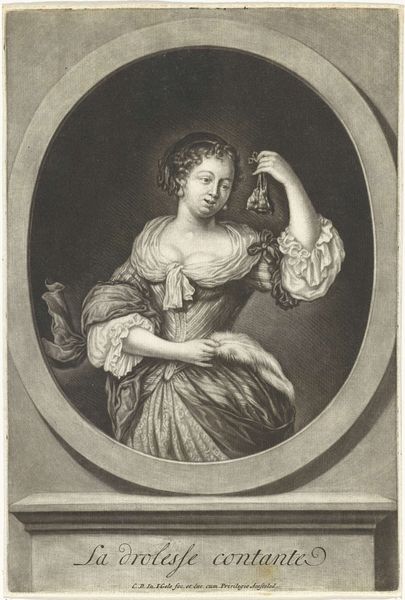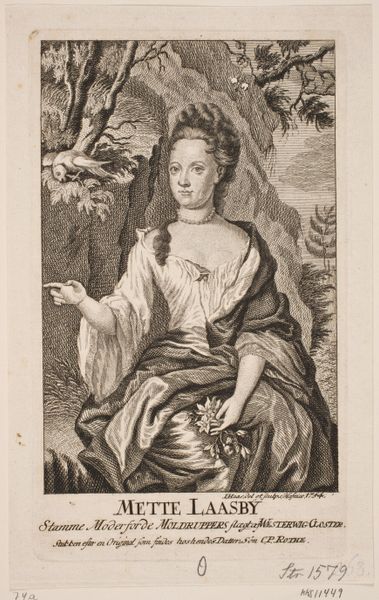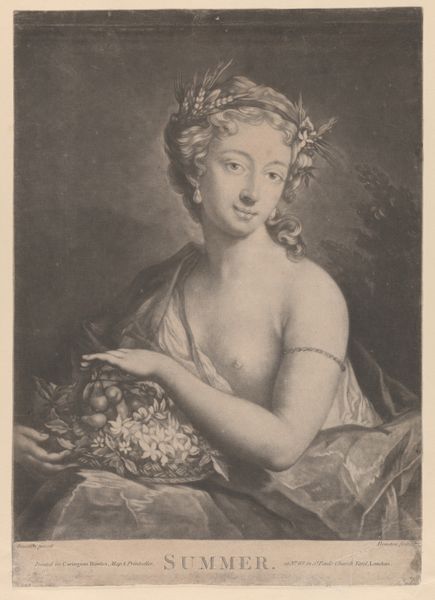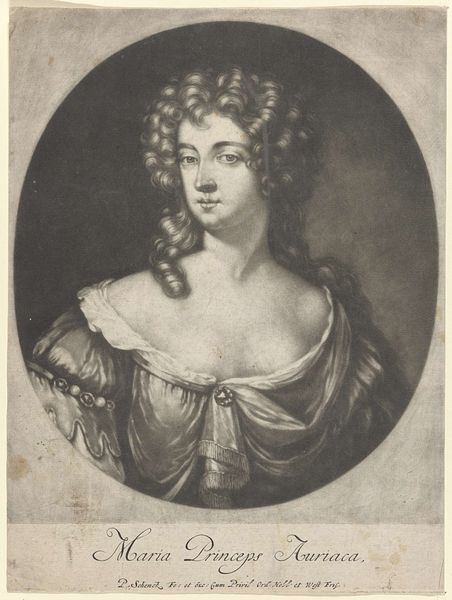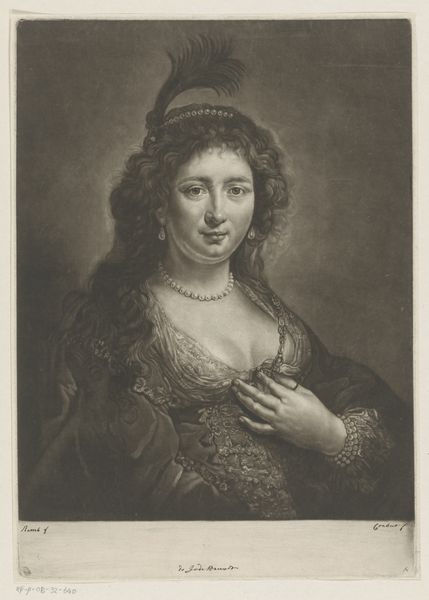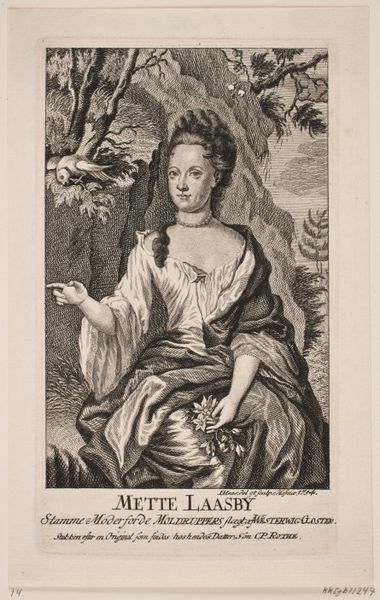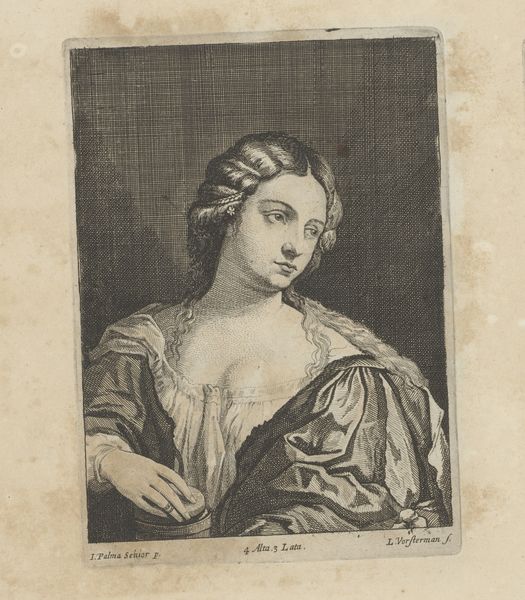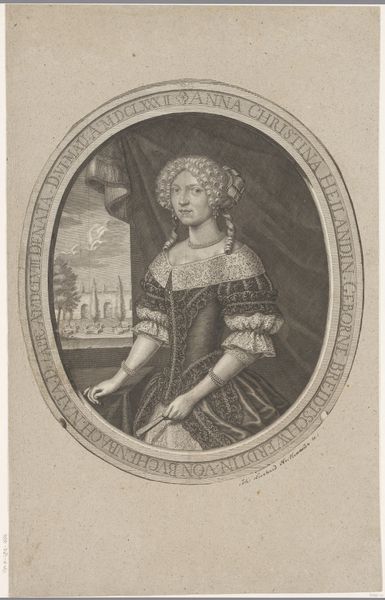
engraving
#
portrait
#
baroque
#
figuration
#
history-painting
#
engraving
Dimensions: height 170 mm, width 113 mm
Copyright: Rijks Museum: Open Domain
Editor: So, this is "Portret van een onbekende vrouw als Flora," created around 1660 by Jan van Troyen. It's an engraving. There’s something almost melancholic about her gaze… what do you see when you look at it? Curator: I see layers of meaning embedded in this seemingly simple portrait. The title identifies the sitter as Flora, the Roman goddess of springtime and flowers, suggesting themes of renewal and beauty. But even without blooming accessories, this representation taps into deeper cultural associations. The woman embodies an ideal, becoming a vessel for springtime. Editor: A vessel… that’s interesting. How does her depiction convey that specifically? Curator: Notice the softness of her features, the gentle curve of her hand. The way she holds what appears to be some kind of writing tool – a stylus, perhaps? Think about Flora’s domain, and how often the ephemeral beauty of flowers is captured through art, through words. She becomes both the embodiment of spring and the artistic muse. Editor: So the stylus symbolizes creation and artistic inspiration connected to the natural world? Is that a common visual reference? Curator: Indeed. The stylus, in this context, connects her to the act of creation. How do you interpret the background, the slightly obscured drapery? Editor: It creates a sense of enclosure. Like she’s captured in this moment, preserved as Flora forever. It’s thought-provoking how a portrait can hold so many symbolic layers. Curator: Exactly. Every detail, consciously or unconsciously, contributes to the visual narrative. It invites us to consider how we continuously reimagine archetypes within our own cultural framework.
Comments
No comments
Be the first to comment and join the conversation on the ultimate creative platform.
